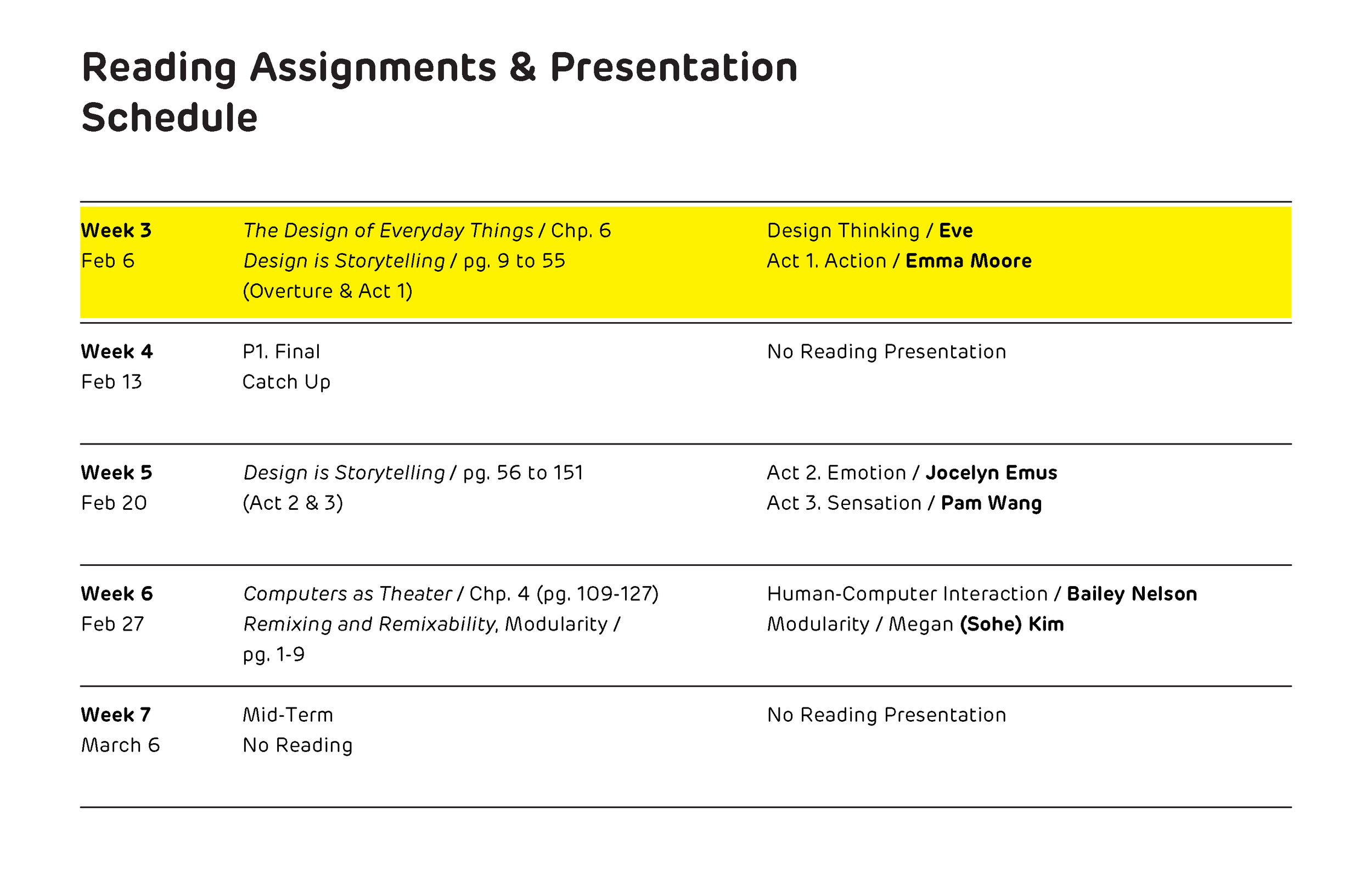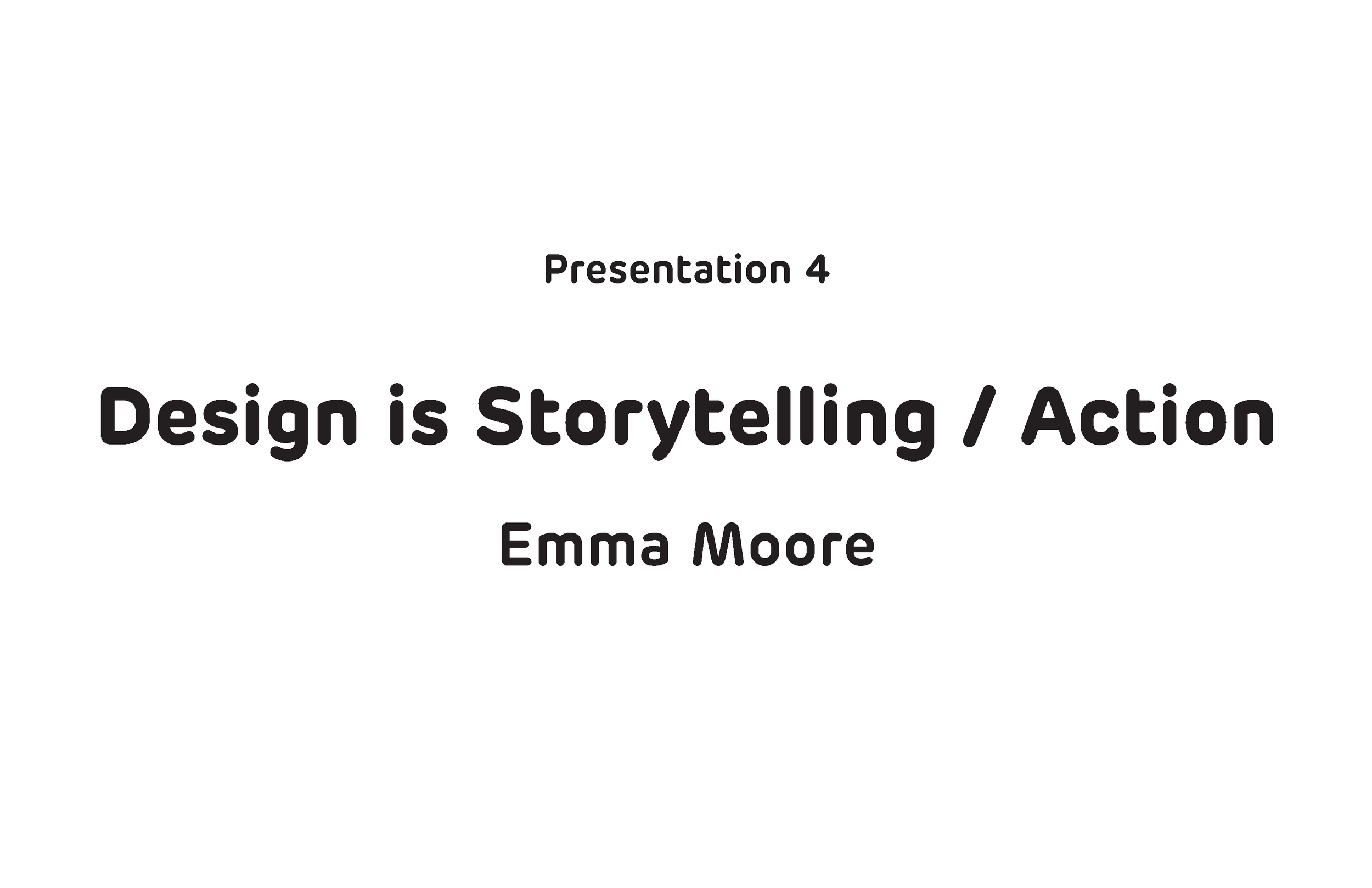Week 3 / Interaction
Great class!
We will have cross-section final review next week. You don’t need to finalize it but do as much as you can.
As a recap, we had two reading presentation from Eve and Emma on Design Thinking by Don Norman, and Design is Storytelling by Ellen Lupton. Norman and Lupton’s description of design were definitely different from each other. While Norman focus on functional aspect and how humans think or function, Lupton is more toward emotional and psychological side of Human Centered Design. Through her statement of design, “…human-centered design, a methodology that combines rational problem solving with emotional storytelling,” she suggests that emotion can be part of the function/purpose of design.
“Design is problem solving.” We have seen this statement a lot. Design is about defining the problem and creating a solution. But we forget to ask some questions before defining the problem : Are there any premises of the problem? and if they exist, are they true? Asking oneself “Are you solving the right problem?” is an important part of debriefing stage. We need to step out and ask about the premises in order to define the ‘right’ problem.
Here are some links to the references that Daisuke mentioned in the class.
[video] Break the bias: Hidesh Hamaguchi at TED x Portland 2012 :
https://www.youtube.com/watch?v=6g2pMOYmyoQ
[video] Chip Kidd: The art of first impressions - in design and life :
https://www.youtube.com/watch?v=0nI65jgHG9o
[article] Are You Solving the Right Problems? by Thomas Wedell-Wedellsborg :
https://hbr.org/2017/01/are-you-solving-the-right-problems
We went through Dunne & Raby’s “A/B Manifesto.” A list represents what speculative design is not, whereas B represents what it is. Most design work falls into the “A” - category, and hold that most future design work should continue to do so. But on their view, there has to exist another type of design practice, the “B”- part of the list, to widen the audiences’ perspective and let them think more about the potential future and emphasize that design is not only about problem solving. In order for designers to be critical, inquisitive at problem-finding, they suggest us to add a stage of “speculation” in our design process. (speculation meaning an activity where conjecture is as good as knowledge, where futuristic and alternative scenarios convey ideas, and where the goal is to emphasize implications of human’s decision-making. Great resource!
For next week :
Project 1 Everyday Interactions :
Do as much as you can for next week. The video doesn’t have to be finalized. Focus more on building a strong main idea of the video/scenario. Collaborate more with your group! Share more ideas or some insights and exchange some thoughts. Feel free to “steal” each other’s idea or get inspire by each other’s.
Create video presentations
Cross-Section Final presentation will be on next week.
Exercise 1 New Type :
With Lila’s great help, Daisuke will soon return everyone’s essays (through Google Classroom) with some comments and suggestions. It’s always great to revisit what’s written in the assignment packet.
Students should analyze the typeface not only in terms of its historical, cultural and aesthetical significance, but also in terms of interaction design and human centered design.
Students should give a thought provoking title, and not be afraid to express their own opinion about the typeface. Student should pay close attention to the internal structure of their essay which will help them create clear visual and typographic hierarchy when they design layout later.
Based on the essay, design a zine. Visualize some key points from your essay with diagram, illustration, photograph, etc. Try out as many design layout options as you can and refer back to what Daisuke said about ‘zig zag layout’ to create more rhythms of the zine layout. The cover image is another great opportunity to engage the readers. Make them get interested and be curious about the zine.
Design layout of zine
print out the spreads in letter-sized paper
Body text needs to be in Nexus
Weekly Reading Assignment / Presenters
No reading assignment.
Reading Presentation Schedule
Class Presentation



























































